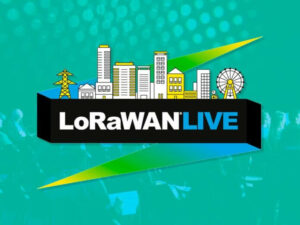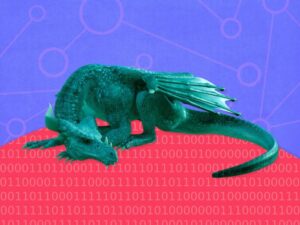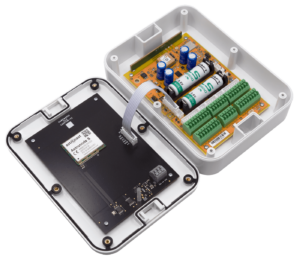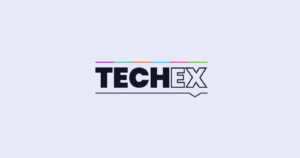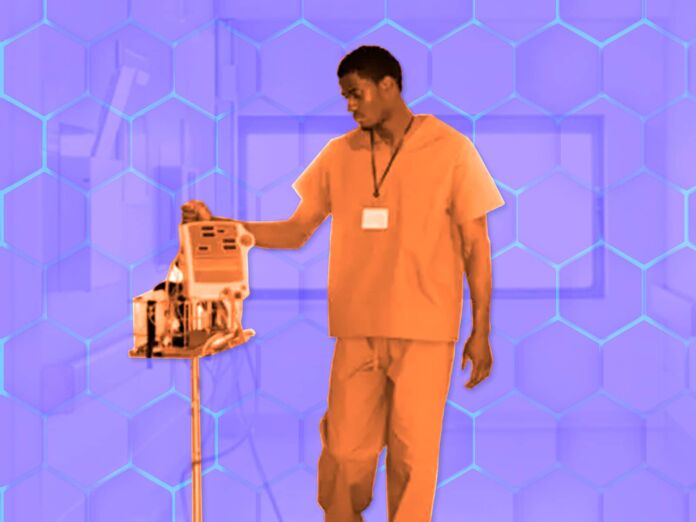
Staffing shortages are a top concern as the healthcare industry continues to emerge from the crisis phase of the COVID-19 pandemic. The ongoing turnover rate for registered nurses has already increased by eight percent in the last year, and a recent survey found that 32 percent of nurses are currently considering leaving their jobs due to burnout and workplace violence. This level of turnover increases stress for the remaining staff, lowers morale, and forces hospitals to limit patient care. As the average age of nurses currently lands at 57 years, this shortage is only anticipated to grow. Lightening the workload of nurses, specifically around non-clinical tasks, and equipping teams with the most advanced tools is paramount to improving the patient care journey and increasing employee satisfaction. Healthcare decision-makers must consider new solutions in IoT and location technology in hospitals to provide the necessary support, optimize clinical workflow, and supply ongoing enterprise visibility to benefit staff and patient care.
“Lightening the workload of nurses, specifically around non-clinical tasks, and equipping teams with the most advanced tools is paramount to improving the patient care journey and increasing employee satisfaction.”
-CenTrak
The Impact of IoT on Healthcare
Equipping healthcare professionals with enterprise visibility to see all the moving pieces throughout a healthcare facility – the patient journey, equipment status, staff updates, and the way each has interacted with one another – ensures that daily operations run smoothly by providing reliable and actionable insights in real time. This visibility is achieved through IoT-enabled location technology, badges, and tags in hospitals. With the successful implementation of smart technology, a healthcare system can reduce annual costs, better support healthcare professionals, and assist in meeting the rising expectations of patients. Healthcare teams should work smarter, not harder.
The use of the Internet of Things (IoT) in healthcare has evolved at an incredible pace and now offers enterprise solutions for the industry. While real-time location systems (RTLS) previously supplied approximate location details, present-day healthcare facilities can utilize advanced IoT-enabled badges and tags to gain real-time intel for the precise locations of assets, patients, and staff.
The advancements in AI, machine learning (ML), and IoT through the robotic process and intelligent automation are enhancing the data insights provided by systems such as real-time location systems (RTLS), which in turn helps facilities better understand process optimization for greater efficiency and patient care. Healthcare facilities throughout the world are leveraging these technologies to construct smart hospitals of the future and enhance the patient and staff experience.
IoT for Clinical Workflow
When an RTLS solution is properly implemented, it enables healthcare organizations to analyze data to find opportunities to optimize resources, such as leveraging insights to adequately staff departments according to the busiest times of the day. Healthcare professionals need access to platforms that automate workflow to alleviate the burden of manual documentation, which takes time away from patient care and can be impacted by human error.
To move healthcare forward and shift to smart solutions, Texas Health Resources (THR) leveraged an existing construction project to create a next-generation wireless system that offered RTLS for workflow automation. This decision automated non-value-added tasks and provided insights on operations improvements. With a custom algorithm to prioritize all tasks related to patient care, patient transport, patient flow, and capacity management, efficiency increased by allocating 100 percent of staff resources to critical operations during peak times and administrative tasks to off-peak hours. Through these actions, THR reported $1 million in first-year savings and reached over 90 percent in both patient satisfaction and employee engagement.
With the use of IoT-enabled badges assigned upon patient check-in, advanced workflow platforms can produce major impacts by offering proactive status updates, estimated wait times, family text messaging alerts, and staff views on display boards that give an easy-to-read layout of each patient’s journey. For example, when patients are wheeled out from surgical rooms at Florida Eye Specialists and moved into recovery areas, staff can see the changeover in real-time and begin preparing the operating room for the next patient. This ensures teams are on the same page with up-to-the-minute visibility to continuously measure interactions and address bottlenecks.
IoT for Asset Management
One-third of nurses report spending at least an hour during an average shift hunting for equipment, taking away valuable patient care. This is where asset tracking comes in. By leveraging smart tags enabled with IoT technology, RTLS offers real-time room and bay-level map views, lists medical equipment locations and detailed equipment usage, and provides alerts for equipment maintenance and cleaning. Once asset management tags are placed on the necessary equipment, staff can review the precise location of equipment in seconds.
Having all mobile medical equipment in stock, clean, and available in the right place is critical to providing timely and safe care. Automating Periodic Automatic Replenishment (PAR)-level inventory management can help ensure there is always enough inventory readily available. By automatically monitoring PAR levels, administrators can accurately measure inventory utilization, reducing staff stressors as ongoing supply chain challenges affect healthcare facilities.
While acquiring other hospitals, Piedmont Healthcare made the strategic decision to standardize its IoT-enabled enterprise location services and optimized asset management processes across its facilities. This decision resulted in annual savings of over $500,000, a 78 percent decrease in rental expenses, and a 48 percent increase in staff satisfaction. The asset management tool effectively solved their equipment distribution and maintenance challenges, eliminating patient wait time for critical equipment necessary for the care and decreasing the time nurses spend searching for equipment.
IoT for Staff & Patient Safety
As healthcare workers continue to provide critical care to their communities, they are also facing increased workplace violence that has grown since the start of the pandemic. National Nurses United recently reported that 48 percent of nurses have faced higher violence since the start of COVID-19, and healthcare workers are four times more likely than any other industry to lose work time because of violence-related injuries.
An RTLS that’s leveraging IoT-enabled location technology badges can better protect and support staff members through cost-effective mobile duress solutions in hospitals. When integrated directly with staff badges, a subtle click of a button on the badge enables a discreet trigger of a real-time duress notification that shares the staff member’s precise location. This ensures security personnel can assist as quickly as possible. Real-time map views, immediate alerts, and location updates create a safe environment for staff, elevating a culture of safety and peace of mind.
Previously using hard-wired, mounted panic buttons located throughout its campus, a hospital in North Carolina knew it need a solution that provided enterprise-level coverage to allow security to respond to the exact point of need. The healthcare system immediately turned to a full, comprehensive RTLS deployment with IoT-enabled badges. By selecting the location system, staff can now immediately dispatch alerts when they’re in a vulnerable position, rather than waiting until an incident occurs and they’re able to locate a hard-wired button. With location technology, incidents are resolved faster or can be completely de-escalated and avoided.
Looking Ahead
As IoT and location technology continue progressing in healthcare and hospitals, the overall industry is seeing significant improvements on both the clinical and operational side within facilities that leverage the offerings. Choosing an RTLS partner with a comprehensive suite of smart solutions enhances the scalability of the technology, making it easier to expand enterprise-wide over time and improve operations further. For many healthcare leaders, staff duress or asset management is just the beginning of their digital transformation with real-time location systems.
- SEO Powered Content & PR Distribution. Get Amplified Today.
- Platoblockchain. Web3 Metaverse Intelligence. Knowledge Amplified. Access Here.
- Source: https://www.iotforall.com/the-power-of-iot-location-technology-in-hospitals
- :is
- $1 million
- 000
- 1
- 100
- 9
- a
- Able
- access
- According
- accurately
- achieved
- acquiring
- across
- actions
- address
- adequately
- administrative
- administrators
- advanced
- advancements
- affect
- AI
- algorithm
- All
- alleviate
- already
- always
- analyze
- and
- annual
- Another
- Anticipated
- ARE
- areas
- around
- AS
- asset
- asset management
- Assets
- assigned
- assist
- At
- automate
- Automated
- Automatic
- automatically
- automating
- Automation
- available
- average
- avoided
- badges
- BE
- because
- begin
- Beginning
- benefit
- Better
- burden
- button
- by
- Campus
- CAN
- Capacity
- care
- chain
- challenges
- choosing
- Cleaning
- click
- Clinical
- Communities
- completely
- comprehensive
- Concern
- Consider
- considering
- construct
- construction
- continue
- continues
- continuously
- cost-effective
- Costs
- coverage
- COVID-19
- COVID-19 pandemic
- create
- crisis
- critical
- Culture
- Currently
- custom
- daily
- data
- day
- decision
- decision-makers
- decrease
- departments
- deployment
- detailed
- details
- digital
- Digital Transformation
- directly
- Dispatch
- Display
- distribution
- documentation
- during
- each
- easier
- effectively
- efficiency
- elevating
- eliminating
- Employee
- Employee Satisfaction
- enabled
- enables
- engagement
- Enhances
- enhancing
- enough
- ensure
- ensures
- Enterprise
- Enterprise Solutions
- enterprise-level
- Environment
- equipment
- error
- estimated
- Ether (ETH)
- evolved
- example
- existing
- Expand
- expectations
- expenses
- experience
- eye
- faced
- facilities
- Facility
- facing
- family
- faster
- Find
- florida
- flow
- For
- Forces
- Forward
- found
- from
- full
- further
- future
- Gain
- Give
- greater
- Grow
- grown
- Have
- Health
- healthcare
- healthcare industry
- help
- helps
- higher
- Hospital
- hospitals
- HOURS
- HTTPS
- human
- Hunting
- immediate
- immediately
- Impact
- impacted
- Impacts
- implementation
- implemented
- improve
- improvements
- improving
- in
- incident
- Increase
- increased
- Increases
- increasing
- incredible
- industry
- insights
- integrated
- Intel
- Intelligent
- Intelligent Automation
- interactions
- Internet
- internet of things
- inventory
- Inventory Management
- iot
- IT
- ITS
- Jobs
- journey
- jpg
- lands
- Last
- Last Year
- Layout
- leaders
- learning
- leaving
- Level
- levels
- Leverage
- leveraging
- lightening
- likely
- LIMIT
- Lists
- located
- location
- locations
- lose
- machine
- machine learning
- made
- maintenance
- major
- Making
- management
- manual
- many
- map
- max-width
- McKinsey
- measure
- medical
- medical equipment
- meeting
- Members
- messaging
- million
- mind
- ML
- Mobile
- monitoring
- more
- most
- move
- moving
- necessary
- Need
- New
- new solutions
- next
- next-generation
- North
- north carolina
- notification
- of
- offered
- offering
- Offerings
- Offers
- on
- ONE
- ongoing
- operating
- operational
- Operations
- opportunities
- optimization
- Optimize
- optimized
- organizations
- Other
- overall
- Pace
- page
- pandemic
- Panic
- Paramount
- partner
- patient
- patient care
- patients
- Peak
- percent
- periodic
- Personnel
- phase
- pieces
- Place
- Platforms
- plato
- Plato Data Intelligence
- PlatoData
- Point
- position
- possible
- power
- precise
- preparing
- previously
- Prioritize
- Proactive
- process
- processes
- produce
- professionals
- progressing
- project
- properly
- protect
- provide
- provided
- provides
- providing
- quickly
- Rate
- rather
- reached
- real
- real-time
- recently
- recovery
- reduce
- reducing
- registered
- related
- reliable
- remaining
- Reported
- resolved
- Resources
- Respond
- review
- rising
- Room
- Rooms
- Run
- safe
- Safety
- same
- satisfaction
- Savings
- Scalability
- searching
- seconds
- security
- seeing
- selecting
- Services
- Shares
- shift
- shortage
- shortages
- should
- significant
- since
- smart
- smarter
- smoothly
- solution
- Solutions
- specialists
- specifically
- spend
- Spending
- Staff
- start
- Status
- stock
- Strategic
- stress
- successful
- such
- suite
- supplied
- supply
- supply chain
- Supply Chain Challenges
- support
- surgical
- system
- Systems
- takes
- taking
- tasks
- teams
- Technologies
- Technology
- texas
- that
- The
- The Future
- the world
- their
- These
- things
- Through
- throughout
- time
- times
- to
- tool
- tools
- top
- Tracking
- Transformation
- transport
- trigger
- TURN
- Turned
- turnover
- understand
- Updates
- Usage
- use
- utilize
- Valuable
- views
- visibility
- Vulnerable
- wait
- Waiting
- Way..
- which
- while
- wireless
- with
- within
- Work
- workers
- workflow
- workflow automation
- Workplace
- world
- year
- years
- zephyrnet




